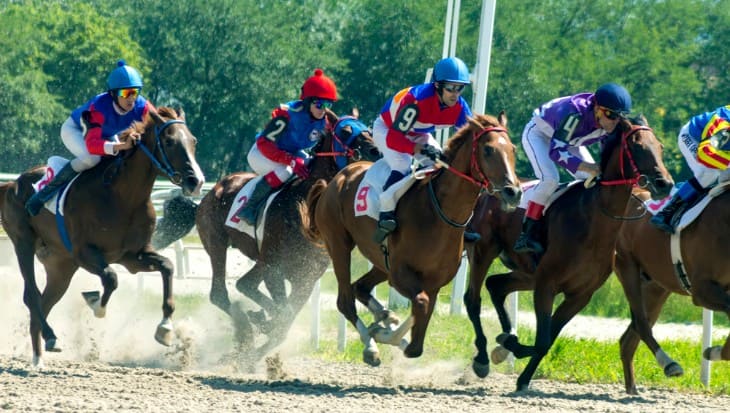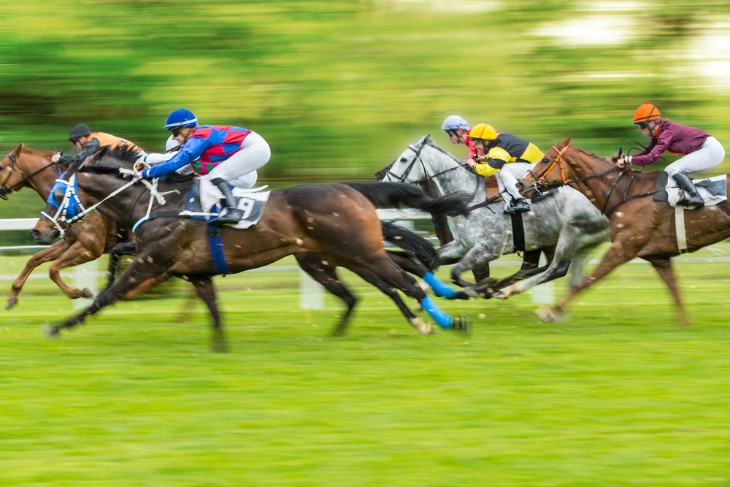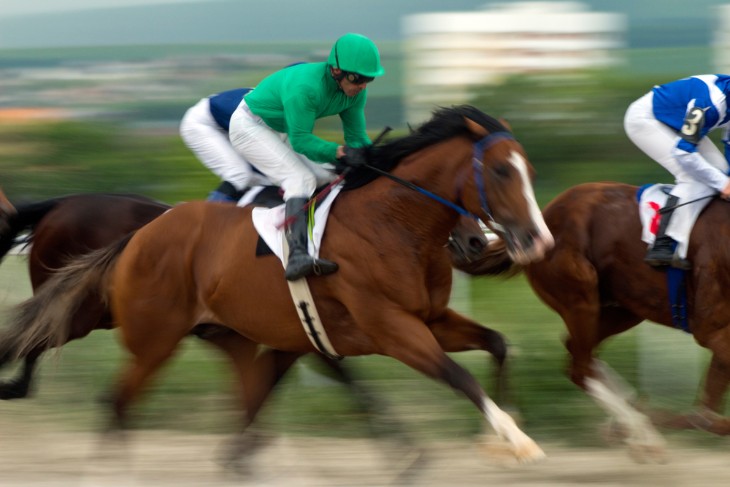The Triple Crown of horse racing is one of the most prestigious achievements in sports, being a real trial for speed, stamina and courage. Composed of three celebrated races, the Triple Crown demands that the best 3-year-old thoroughbreds succeed in all three to be named champions.
However, its attraction does not only lie in difficulty but also its historical significance and glory attached to these races making them so iconic. Thus winning the Triple Crown means that a horse will remain immortalised in the history of horse racing.
What Makes Up the Triple Crown in Horse Racing?
The Triple Crown consists of three renowned races namely The Kentucky Derby, The Preakness Stakes and The Belmont Stakes. Each race has its unique characteristics and challenges, thus making the Triple Crown test horse versatility and endurance.
The Kentucky Derby: The Run for the Roses
Churchill Downs is where the Kentucky Derby takes place as an inaugural part of the United States' premier classic race series for horses. It is often called "The Run for the Roses". This makes it distinct not just because it forms part of the famous Triple Crown but also because it has a great heritage and customs.
In terms of distance covered by each racehorse at 1¼ miles (about 2 kilometres), this competition becomes a spectacle like no other sport on earth. Usually held on the first Saturday after Mayday, this occasion draws a crowd numbering in thousands: both true fans with years spent studying horse racing techniques or casual admirers who might never see another event like this again.
All of it is not just a game – this is especially clear when you are talking about such events as the Kentucky Derby because they represent more than just sports; they have become cultural phenomena expressing themselves through fashion trends or other practices supported by tradition.
Additionally, it should be noted that this garland made out of 400 roses accounted for one more significant feature distinguishing this competition from all others bearing its name within the Triple Crown. "The Run for the Roses" is a nickname that has stuck due to this tradition. In a grand ceremony, more than 400 blooms of red roses are used to create this garland and it's presented to the winning horse and its connections.
Kentucky Derby is best remembered for its bright atmosphere with people in attendance wearing their best outfits including fancy hats while others are putting on colourful clothes. Furthermore, mint juleps (traditional drinks at Derby) and a live audience enhance the excitement.
In essence, the Kentucky Derby pushes horses' adaptability and swiftness limits. With an average of twenty competing horses, it becomes almost like a chess game with some of them trying to outsmart their peers while others struggle for better positions on the track. The one winning the Kentucky Derby takes another step towards Triple Crown glory before facing Preakness Stakes followed by Belmont Stakes.
The Kentucky Derby as an opening race in Triple Crown challenges horses through speed tests coupled with strategies, where the victorious animal receives a rose-embroidered blanket called garland of roses making its way towards Triple Crown greatness.

The Preakness Stakes: The Test of Pacing
Being part of the series of races known as the triple crown; Preakness Stakes holds a unique position in this three-race championship sprinting contest after first use. This event commonly referred to as "the run for black eyes" is staged at Pimlico Race Course Baltimore Maryland and it tests pacing plus strategy among other things thereon.
What sets the Preakness apart is its distance of 1 3/16 miles (about 1.91 kilometres), just a bit shorter than the Kentucky Derby.
The Preakness and the Kentucky Derby can be distinguished by differences in track surface, distance, field size, and positions on the racing calendar. While the Kentucky Derby tests a horse's raw speed, the Preakness requires different talents – an ability to keep up a good pace which is slightly shorter.
The two-week gap between the Kentucky Derby and the Preakness Stakes doesn't provide much time for recovery or preparation.
There are only two weeks between these races, so horses need to arrive at Pimlico Race Course in optimal condition. The race itself is also much shorter, leaving little room for error. It means that jockeys have to ride very carefully throughout the event and keep their horses from running out of gas too early.
Jockeys must make strategic decisions throughout this tactical race. Timing is crucial in order not to tire too soon or be surprised by the opponent's sudden final dash. The Preakness is often described as a tactical race.
The atmosphere is electric at this second leg of the Triple Crown with many enthusiastic fans present who cheer their favourite contenders till they get hoarse. Belmont Park has extremely tight turns wherein a horse's agility and a jockey's ability to choose the right lines come into play.
The Belmont Stakes: The Ultimate Test of Stamina
Holding at Belmont Park in Elmont, New York, The Belmont Stakes represents "the test of a champion". The Belmont Stakes is where horses are tested for stamina.
What sets the Belmont Stakes apart is its gruelling distance of 1½ miles making it three furlongs longer than any other Triple Crown race.
After winning both the Kentucky Derby and the Preakness stakes that precede it, they would now have to prove whether they can go the whole distance in this Belmont Stakes.
The Belmont Stakes typically take place three weeks after the Preakness, providing some respite for the contenders. Moreover, this is a very long race which is more of a test of endurance than speed.
Winning the Belmont Stakes is a monumental achievement on its own, but it also secures a horse's place in history as a Triple Crown winner.
Out of so many who have tried only 11 horses have managed to win all these races. However, there are other races like Peter Pan and Ohio Derby among others that serves as stepping stones for horses that want to win this prestigious race.
The race's nickname, "The Test of the Champion," is a fitting description.
Legendary racehorse status
A horse’s reputation can be elevated to legendary status in the annals of horseracing when it is pursued for the Triple Crown. The following are key drivers of this elevation.
- Rare Accomplishment: Earning the Triple Crown is a very rare feat. The Kentucky Derby, Belmont Stakes and Preakness Stakes all provide a demanding program as well as different challenges. Horses that do this become part of racing mythology by becoming members of an illustrious club. When there appears a contender for the triple crown, anticipation and excitement reach the fever-pitch.
- Immortalised in History: Triple Crown winners are immortalised in the annals of horse racing history. Their names are etched into record books, and their stories are retold to new generations. Horses like Secretariat, Seattle Slew, and American Pharoah are celebrated not just for their victories but also for the indelible mark they left on the sport.
- Inspiring Future Generations: The feats of Triple Crown winners inspire future generations of horse racing enthusiasts. Young jockeys, trainers, and owners look up to these iconic horses as examples of what can be achieved in the sport. The pursuit of the Triple Crown serves as a beacon of excellence and a reminder of the boundless potential of thoroughbreds.
- Increased Popularity: Triple Crown winners bring increased popularity to horse racing. Their stories capture the imagination of not just die-hard fans but also the wider public. The sport gains new fans who are drawn by the allure of witnessing greatness. This surge in popularity contributes to the longevity and vibrancy of horse racing.
- Enduring Legacy: A Triple Crown victory ensures an enduring legacy for the horse. Long after their racing career ends, these horses continue to be celebrated and revered. They often go on to successful breeding careers, passing on their exceptional genes to the next generation of racehorses.
Challenges Faced by Triple Crown Contenders
Triple Crown contenders, those horses aiming to win the Kentucky Derby, Preakness Stakes, and Belmont Stakes in a single season, face a unique set of challenges that test their abilities to the fullest. These challenges include:
- Rigorous Schedule: The Triple Crown races are held within just five weeks, a demanding schedule that requires horses to maintain peak physical condition. The quick turnaround between races leaves little room for rest or recovery. The Kentucky Derby, as the first leg, sets the tone for the series.
- The Preakness Stakes: The second leg, the Preakness Stakes, presents its own set of challenges. The shorter 1 3/16-mile distance requires precise pacing. Horses must recover quickly from the Kentucky Derby and adapt to the new distance.
- The Belmont Stakes: The Belmont Stakes, the final leg, is often considered the most gruelling. Its 1½-mile distance tests a horse's stamina to the limit. Contenders must show they can handle the added distance and still perform at their best.
- Tactical Racing: Each Triple Crown race demands a different approach. Horses and jockeys must adapt their strategies to the unique characteristics of each racecourse and distance.
- Competition: The competition is fierce. The Triple Crown draws the best three-year-old thoroughbreds from around the world. Horses must prove their superiority against top-class rivals.

The Impact on the Horse Racing Industry
The achievement of winning the Triple Crown has a profound impact on the horse racing industry, influencing various aspects and driving widespread interest. This impact can be summarised as follows:
- Increased Attention and Viewership: The pursuit of the Triple Crown generates heightened interest in horse racing. It attracts not only dedicated fans but also casual spectators who tune in to witness history being made. The Kentucky Derby, Preakness Stakes, and Belmont Stakes all experience a surge in attendance and viewership when a Triple Crown contender emerges. The prospect of witnessing a Triple Crown winner captivates imaginations and creates a buzz around the sport.
- Boost in Wagering: The Triple Crown series is a focal point for horse race betting. The excitement and anticipation surrounding the races lead to higher wagering activity. Bettors are drawn to the challenge of predicting which horse will claim the coveted title, leading to increased betting turnover.
- Breeding and Bloodlines: A horse that wins the Triple Crown becomes highly valuable for breeding purposes. The horse's superior genetics and racing prowess make it a sought-after choice for breeding, and its offspring carry the potential for greatness in the sport. The impact on breeding extends beyond the individual horse. It contributes to the development of bloodlines that may produce future champions.
- Legacy and Historical Significance: A Triple Crown winner leaves an indelible mark on the sport's history. Their name is etched alongside legendary horses, and their legacy endures for generations. This historical significance enriches the narrative of horse racing and serves as a source of inspiration for aspiring jockeys, trainers, and owners.
The Future of the Triple Crown
The Triple Crown in horse racing has a rich history and a promising future. While it remains a beloved tradition, there are ongoing discussions and considerations for its evolution in the modern era.
Horse racing authorities are continuously exploring ways to enhance the Triple Crown experience. This includes initiatives to improve horse safety, modernise racecourses, and engage with a younger audience. These efforts are aimed at ensuring the Triple Crown remains relevant and sustainable.
One significant aspect under scrutiny is the timing of the races. The current schedule, with races held within five weeks, presents physical and logistical challenges for horses and participants. Some propose adjustments to provide more recovery time between races, potentially reducing the intensity of the series.
Additionally, there are discussions about expanding the Triple Crown to include international races. This could create a global championship series that attracts top horses from around the world, further elevating the sport's prestige.
The Triple Crown also plays a crucial role in promoting thoroughbred breeding. Breeding programs aim to produce horses with the potential to win these prestigious races. The future of the Triple Crown is intertwined with the continued development of bloodlines and the pursuit of excellence in breeding.
The Triple Crown in horse racing has a bright future, marked by efforts to ensure its sustainability, improve safety, and potentially expand its global reach. It remains a cherished tradition in the world of horse racing, with its legacy enduring for generations to come.
In Summary
The Triple Crown remains one of the most coveted achievements in horse racing. It's a rare feat that requires a horse to possess a unique blend of speed, stamina, and determination. Each race in the Triple Crown presents its own set of challenges, making it a true test of a horse's all-around ability.
Winning the Triple Crown is a historic accomplishment that ensures a horse's name is remembered for generations. As each racing season unfolds, the excitement builds around the possibility of witnessing another horse chase history and joining the exclusive club of Triple Crown winners.








